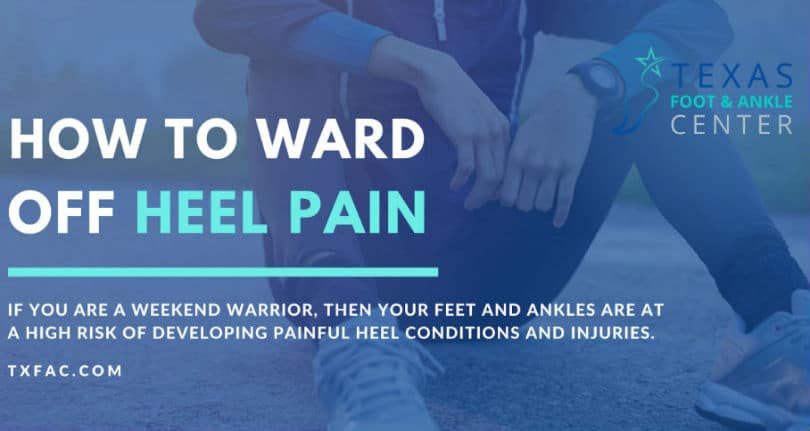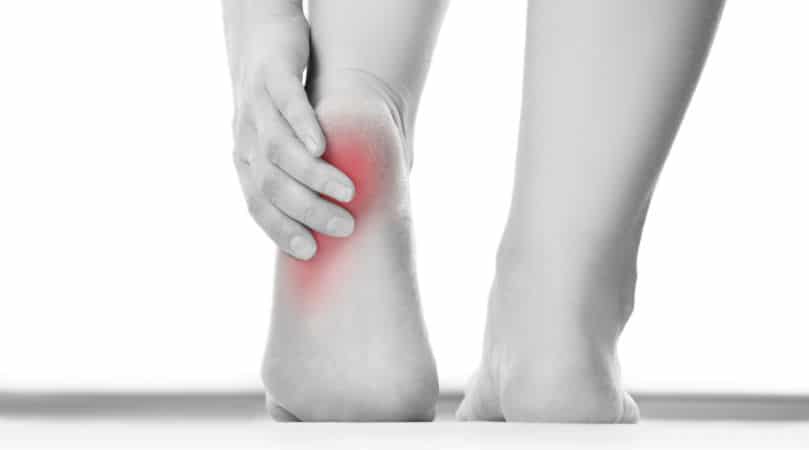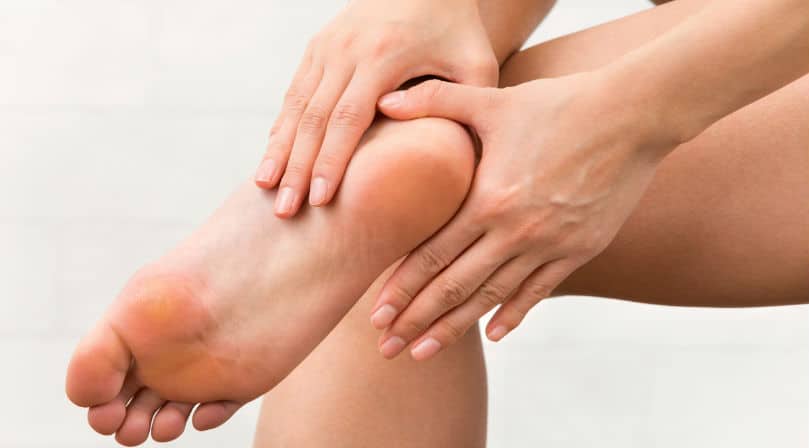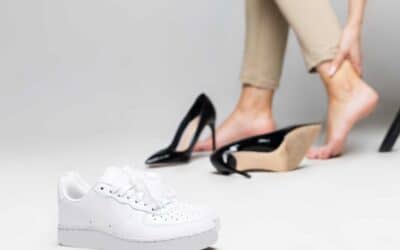How to Ward Off Heel Pain When You’re a Weekend Warrior
When the weather is ideal, there is nothing more invigorating than being active outdoors – the sun and the gentle breeze beckons you to get to your feet and try new activities, things you might not usually do on the regular basis.
For example, maybe you decided to run a couple miles on a Saturday morning, or perhaps you have scheduled a competitive soccer game with your friends on Sunday.
But, weekend warriors like yourself should beware – your feet and ankles will bear tremendous impact and forces while you are sprinting down the trail or charging towards the goal.
In fact, your feet will, at times, take on more than 4 times your body weight. That means doing too much too soon can definitely lead to sports related injuries (heel pain being one of the most common) and even sideline you for the rest of the season.
Indeed, if you have “Weekend Warrior Syndrome” (WWS), chances are you get super excited about participating in a sport or activity…but don’t really have enough time to properly train and prepare your body.
At Texas Foot & Ankle Center, we understand that daily responsibilities can keep you from being as active as you would like, but going from 0 to 100 all at once is usually not the best idea.
The bottom line here is that no matter which sports you are planning on being a part of during the weekends, all of them have something in common – the risk of injury. And though we can definitely treat any foot or ankle injuries you may experience, we would much rather give you some helpful tips to keep you safe in the first place!
So keep reading our blog to find out how you – weekend warrior – can go into battle with strong and healthy feet, and less risk of injury.

Common Sports Injuries to the Heel
The first thing you should do is become familiar with some of the most common foot conditions that may cause your heels to hurt. Below are some:
Achilles Tendinitis
This common injury involves the soft tissues in and around the Achilles tendon, which connects the calf muscles to the heel bone.
Plantar Fasciitis
This condition – the leading source of adult heel pain – is an inflammation of the broad, flat ligament that runs across the bottom of the foot and connects the heel bone to the toes.
Bursitis
This is an inflammation of the small fluid-filled pads (bursae) that act as cushions for bones and tendons near joints.
Now, you may be wondering if you have developed any of the conditions above, and there are some telltale signs that could very well indicate one of them is affecting you.
Common Symptoms of Sports Injuries to the Heel
Some of the most common symptoms that can indicate something is wrong with your heels are:
- Pain when moving, pressing on the bursa, wearing shoes, and/or during activity.
- Mild ache in the back of the leg or above the heel after performing activities.
- Pain that starts off minor in a localized location and proceeds to worsen with time.
- Stabbing pain that usually occurs with first steps in the morning.
- An achy or stiff heel or ankle joint.
- Swelling of the foot or ankle.
- Difficulty walking.
Unfortunately, these symptoms can easily keep you on the sidelines. But just as easy are the preventative methods you can use to steer clear from heel pain. Let’s check them out.
Prevent Sports Injuries to the Heel
The good news is that sports injury risks can be reduced with just a little knowledge and effort. Below are some tips that will help you keep sports injuries away:
- Always warm up first.Before starting activities, take 5-10 minutes to warm up by lightly jogging or briskly walking.
- Thoroughly stretch after warming up. Going into activity with muscles that are cold and tight is an open invite for injury.
- Wear appropriate footwear. Make sure your shoes are appropriate for your sport(s) of choice, and that they provide the right amount of support and protection to your feet.
- Ease into physical activity. Fight the urge of doing too much too soon. Instead, gradually progress with regard to your frequency and duration of activity.
- Be mindful of your injury. If you have suffered an injury, it is important that you completely heal before getting back in the game. Failure to do so will increase your risk of reinjury.
- Never push through the pain.If you are experiencing pain or tenderness in the heel, immediately stop what you are doing and avoid high-impact activities until the pain goes away completely.
The key to successfully addressing any and all sports injuries is, of course, to take care of it immediately. So, if you are experiencing any discomfort – of if you ever do in the future – then you should have your feet evaluated by one of our expert doctors here at Texas Foot & Ankle Center right away.

Treat Sports Injuries to the Heel
When you come visit us, we will perform a thorough analysis of your feet and ankles in order to determine the extent of your condition and provide the best solution for your specific needs – your treatment will depend entirely on your individual injury.
And the good news is that, usually, conservative methods will do the trick – we most likely will recommend that you take a break from your regular activities, perform some physical therapy, make some shoe changes, or prescribe orthotics to be worn in your footwear.
While you wait to come in to our office for your evaluation, there are certainly things you can do at home – most overuse injuries respond well to the R.I.C.E. method:
- Don’t put weight on the foot until the pain is gone or nearly gone.
- Ice. Apply ice to the injured area – use a towel to protect your skin.
- Wrap the injured area in an ACE bandage – make sure it is not too tight, however.
- Keep the injured foot above the level of the heart.
If we determine that your case is severe (which we certainly hope is not the case!), we may treat your condition with pain relievers, splints, steroid injections, or surgery. But whatever your situation, you can rest assured that when you come visit our office, you are in good hands.
Let Us Help You Today!
We hope that, armed with these tips, you are able to reduce your odds of getting hurt during your favorite activities. However, you should keep in mind that it is virtually impossible to completely eliminate risk of injury.
So whenever – and if ever – foot and ankle problems arise, Texas Foot & Ankle Center can provide you with the care you need. All you have to do is call our Dallas office at (214) 660-0777 or simply fill out our handy contact form online.
© Texas Foot & Ankle Center. All Rights Reserved.
Web Design by CP Solutions.
Marketed by VMD Services.



